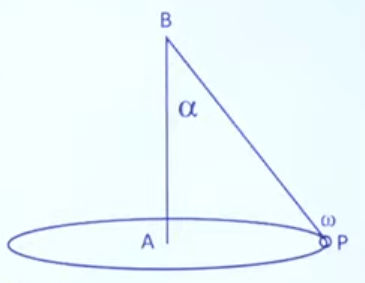When a particle is recolving around a circular path with uniform angular velocity , then its acceleration is
along the tangent drawn at any poit
along the circumference of the circle
along the radius towards the centre of the circle
zero
The correct Answer is:C
Particle experiences only radial acceleration.
Topper's Solved these Questions
Similar Questions
A particle is moving along a circular path. The angular velocity, linear velocity,. Angular acceleration, and centripetal acceleration of the particle at any instant. Respectively are →ω,→v,→∝,and→ac. Which of the following relations is not correct ?
View SolutionA particle moving along a circule path of radius 'r' with uniform angular velocity ω. Its angular acceleration is
View Solution
Knowledge Check
- Question 1 - Select One
A particle is moving around a circular path with uniform angular speed (x) . The radius of the circular path is (r). The acceleration of the particle is:
Ax2rBxrCrx2Drx - Question 2 - Select One
A particle is moving along a circular path. The angular velocity, linear velocity, angular acceleration, and centripetal acceleration of the particle at any instant respectively are →w,→v,→α,→ac. Which of the following relation is not correct ?
A→ω⊥→vB→ω⊥→αC→ω⊥→αcD→v⊥→αc - Question 3 - Select One
A particle is moving along a circular path. The angular velocity, linear velocity, angular acceleration and centripetal acceleration of the particle at any instant are →ω,→v,→a,→ac respectively. Which of the following relations are correct ?
A→ω⊥→vB→ω⊥→aC→ω⊥→acD→v⊥→ac
A particle is moving on a circular path with constant speed, then its acceleration will be
View SolutionParticles is moving on circular track such that its angular velocity is constant then
 View Solution
View SolutionWhen particle revolves with uniform speed on a circular path
View Solution
A particle is moving on a circular path of radius r with uniform velocity v. The change in velocity when the particle moves from P to Q is (∠POQ=40∘)View SolutionA particle moving in a circular path of radius (r) with velocity (V), Then centripetal acceleration of the particle is
View Solution

